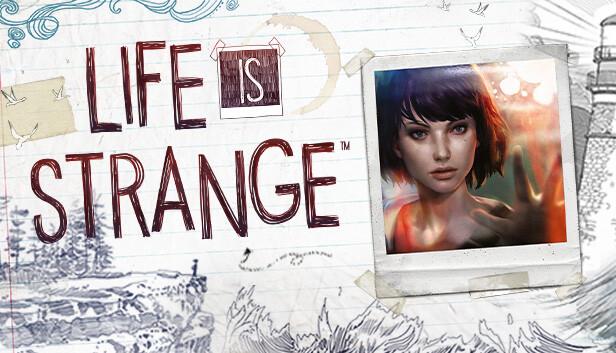Life is Strange is an episodic game created by Dontnod Entertainment and published by Square Enix. It is targeted for young adults that enjoy narrative-driven game experiences with elements of choice and consequence. For my critical play, I played Life is Strange (episode 1) on Steam using my Mac.
Life is Strange utilizes investigative actions to empower players to make critical choices and influence the fate of the game. These actions are woven into the environment containing clues and hints that are crucial to the progression of the game. Through a combination of loops and arcs, players navigate through the perspective of Max Caulfield to chart the course of their actions and consequences.
There are three main mechanics in Life is Strange that contribute to its narrative. The first mechanic is interacting with items – looking, reading, and saving items. The second mechanic is interacting with characters. Players can look at characters to hear Max’s thoughts about them, talk to characters, or listen to characters’ conversations. Interacting with other characters allows players to further discover clues as well as develop relationships with them.


The third mechanic is rewinding time. This is the most significant mechanic because it allows players to explore different choices and their outcomes. Players may observe and examine new clues when they rewind, or they are sometimes presented with new choices they can make. Moreover, players must make use of all three mechanics in order to progress in the game. By interacting with the environment, players can uncover hints and clues that allow them to save the lives of characters, prevent an event from happening, or develop an understanding of the phenomenon behind Max’s ability to time travel. An interesting aspect of this mechanic is that players can only rewind time during a significant event during indicated events. This was a good design decision because it allows players to evaluate different decisions, but it still reinforces the theme of consequence, since not all decisions can be undone. Likewise, when players are able to rewind, they can choose how far they want to rewind in time. Altogether, these three mechanics reinforce the themes of choice and outcome.

A game detail related to the mechanic of rewinding time is the appearance of butterflies. Butterflies serve as visual cues when players encounter a significant choice or event. These moments are often marked by the opportunity to rewind time and explore different actions. This was a clever design decision because it alludes to the concept of the butterfly effect, which asserts that even small decisions can have significant impact. The butterflies not only reinforce the thematic depth of the game, but they enhance the players’ understanding of the complex narratives.

Throughout the use of mechanics, players are immersed in a continuous loop of decision-making. As players progress through the episode, they are presented with smaller objectives, each comprising choices that impact the overall narrative. Players can evaluate the outcome of their actions and choose to rewind time, when possible. Each time a decision is made, players create different narrative paths for how the game unfolds and the different consequences that arise.
Additionally, the decision-making process contributes to the arc of Max’s character development. Each time players make a decision on Max’s behalf, Max grapples with the consequences, leading to introspection and personal growth. While certain decisions allow Max to mature further, the trajectory of the game is ultimately up to the player. Players witness Max evolve over the course of the game, in which her choices not only shape the narrative of the game but also her identity, relationships, and morality.
Evidently, Life is Strange offers a profound sense of autonomy, aligning with the principles of self-determination theory. Throughout the game, players must make many choices, uncover various clues and hints, and engage with diverse characters. This freedom to shape their own narrative path empowers players to exercise autonomy, also fulfilling the psychological need for achievement. Furthermore, each decision made by the players is a reflection of their own values and perspectives, fostering a deeply immersive and personal gameplay experience. Ultimately, the ability to craft their own trajectory underscores the achievement derived from player autonomy and further enhances the satisfaction and enjoyment of gameplay.



